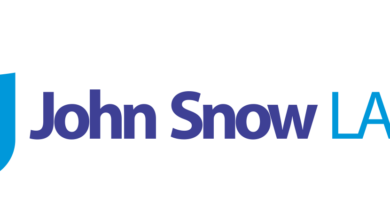Unveiling Meta Llama 3: A Leap Forward in Large Language Models

In the field of generative AI, Meta continues to lead with its commitment to open-source availability, distributing its advanced Large Language Model Meta AI (Llama) series globally to developers and researchers. Building on its progressive initiatives, Meta recently introduced the third iteration of this series, Llama 3. This new edition improves significantly upon Llama 2, offering numerous enhancements and setting benchmarks that challenge industry competitors such as Google, Mistral, and Anthropic. This article explores the significant advancements of Llama 3 and how it compares to its predecessor, Llama 2.
Meta’s Llama Series: From Exclusive to Open Access and Enhanced Performance
Meta initiated its Llama series in 2022 with the launch of Llama 1, a model confined to noncommercial use and accessible only to selected research institutions due to the immense computational demands and proprietary nature that characterized cutting-edge LLMs at the time. In 2023, with the rollout of Llama 2, Meta AI shifted toward greater openness, offering the model freely for both research and commercial purposes. This move was designed to democratize access to sophisticated generative AI technologies, allowing a wider array of users, including startups and smaller research teams, to innovate and develop applications without the steep costs typically associated with large-scale models. Continuing this trend toward openness, Meta has introduced Llama 3, which focuses on improving the performance of smaller models across various industrial benchmarks.
Introducing Llama 3
Llama 3 is the second generation of Meta’s open-source large language models (LLMs), featuring both pre-trained and instruction-fine-tuned models with 8B and 70B parameters. In line with its predecessors, Llama 3 utilizes a decoder-only transformer architecture and continues the practice of autoregressive, self-supervised training to predict subsequent tokens in text sequences. Llama 3 is pre-trained on a dataset that is seven times larger than that used for Llama 2, featuring over 15 trillion tokens drawn from a newly curated mix of publicly available online data. This vast dataset is processed using two clusters equipped with 24,000 GPUs. To maintain the high quality of this training data, a variety of data-centric AI techniques were employed, including heuristic and NSFW filters, semantic deduplication, and text quality classification. Tailored for dialogue applications, the Llama 3 Instruct model has been significantly enhanced, incorporating over 10 million human-annotated data samples and leveraging a sophisticated mix of training methods such as supervised fine-tuning (SFT), rejection sampling, proximal policy optimization (PPO), and direct policy optimization (DPO).
Llama 3 vs. Llama 2: Key Enhancements
Llama 3 brings several improvements over Llama 2, significantly boosting its functionality and performance:
- Expanded Vocabulary: Llama 3 has increased its vocabulary to 128,256 tokens, up from Llama 2’s 32,000 tokens. This enhancement supports more efficient text encoding for both inputs and outputs and strengthens its multilingual capabilities.
- Extended Context Length: Llama 3 models provide a context length of 8,000 tokens, doubling the 4,090 tokens supported by Llama 2. This increase allows for more extensive content handling, encompassing both user prompts and model responses.
- Upgraded Training Data: The training dataset for Llama 3 is seven times larger than that of Llama 2, including four times more code. It contains over 5% high-quality, non-English data spanning more than 30 languages, which is crucial for multilingual application support. This data undergoes rigorous quality control using advanced techniques such as heuristic and NSFW filters, semantic deduplication, and text classifiers.
- Refined Instruction-Tuning and Evaluation: Diverging from Llama 2, Llama 3 utilizes advanced instruction-tuning techniques, including supervised fine-tuning (SFT), rejection sampling, proximal policy optimization (PPO), and direct policy optimization (DPO). To augment this process, a new high-quality human evaluation set has been introduced, consisting of 1,800 prompts covering diverse use cases such as advice, brainstorming, classification, coding, and more, ensuring comprehensive assessment and fine-tuning of the model’s capabilities.
- Advanced AI Safety: Llama 3, like Llama 2, incorporates strict safety measures such as instruction fine-tuning and comprehensive red-teaming to mitigate risks, especially in critical areas like cybersecurity and biological threats. In support of these efforts, Meta has also introduced Llama Guard 2, fine-tuned on the 8B version of Llama 3. This new model enhances the Llama Guard series by classifying LLM inputs and responses to identify potentially unsafe content, making it ideal for production environments.
Availability of Llama 3
Llama 3 models are now integrated into the Hugging Face ecosystem, enhancing accessibility for developers. The models are also available through model-as-a-service platforms such as Perplexity Labs and Fireworks.ai, and on cloud platforms like AWS SageMaker, Azure ML, and Vertex AI. Meta plans to broaden Llama 3’s availability further, including platforms such as Google Cloud, Kaggle, IBM WatsonX, NVIDIA NIM, and Snowflake. Additionally, hardware support for Llama 3 will be extended to include platforms from AMD, AWS, Dell, Intel, NVIDIA, and Qualcomm.
Upcoming Enhancements in Llama 3
Meta has revealed that the current release of Llama 3 is merely the initial phase in their broader vision for the full version of Llama 3. They are developing an advanced model with over 400 billion parameters that will introduce new features, including multimodality and the capacity to handle multiple languages. This enhanced version will also feature a significantly extended context window and improved overall performance capabilities.
The Bottom Line
Meta’s Llama 3 marks a significant evolution in the landscape of large language models, propelling the series not only towards greater open-source accessibility but also substantially enhancing its performance capabilities. With a training dataset seven times larger than its predecessor and features like expanded vocabulary and increased context length, Llama 3 sets new benchmarks that challenge even the strongest industry competitors.
This third iteration not only continues to democratize AI technology by making high-level capabilities available to a broader spectrum of developers but also introduces significant advancements in safety and training precision. By integrating these models into platforms like Hugging Face and extending availability through major cloud services, Meta is ensuring that Llama 3 is as ubiquitous as it is powerful.
Looking ahead, Meta’s ongoing development promises even more robust capabilities, including multimodality and expanded language support, setting the stage for Llama 3 to not only compete with but potentially surpass other major AI models in the market. Llama 3 is a testament to Meta’s commitment to leading the AI revolution, providing tools that are not just more accessible but also significantly more advanced and safer for a global user base.





